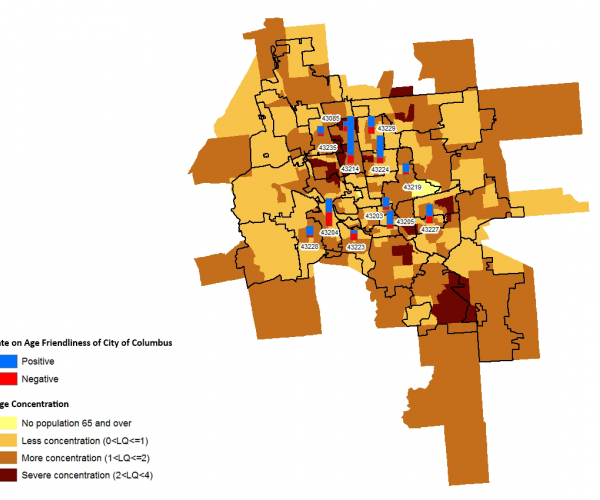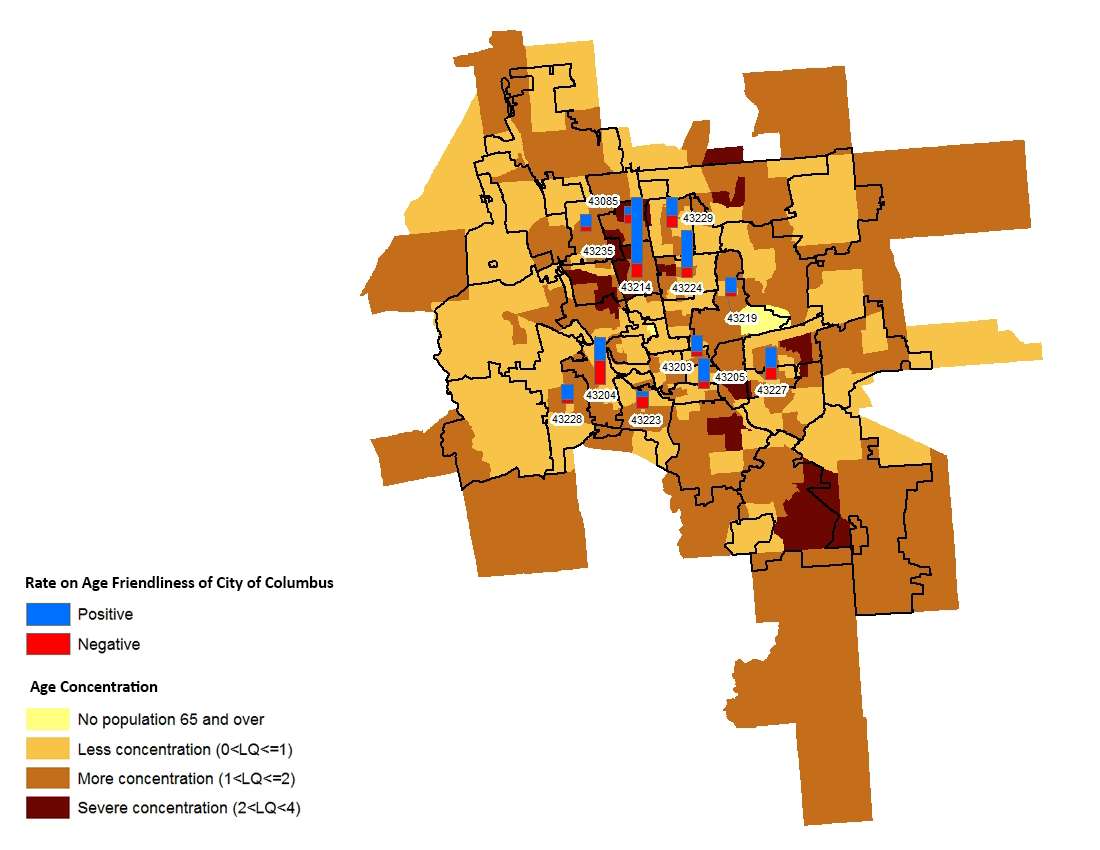
by Kukhyoung Kim


by Kukhyoung Kim
As people have longer life expectancy, we are living with a growing senior population in the same community. U.S. seniors frequently socialize with their neighbors and other social groups and volunteer in their community, but they tend to have difficulties in expanding or maintaining social networks (Cornwell, Laumann, & Schumm, 2008).
This study used a comprehensive survey on age-friendliness in Columbus, Ohio, in 2016. The questionnaire included social participation, respect and social inclusion, and communication and information with other range of livability. To examine the relationships between socioeconomic demographic characteristics of a community and the individuals ‘positive perceptions of age-friendliness, I used the 2016 American survey 5-year estimated data for communities’ socioeconomic characteristics (age, racial and ethnic minorities, education, and household income) in census tract level. For example, the age concentration index of each tract was calculated using Location Quotient (LQ). In this study, the LQ value indicates how high the density of the older adult population in each tract is compared to the density of the older adult population in the City of Columbus.
I identified that the individual’s positive perception of age-friendliness more shows in the tracts with a significant concentration of the older adult population. And individuals living in the lower level of diversity (age and race/ethnicity) with a lower level of socioeconomic status (median household income and education) showed relatively more negative perceptions of the city’s age-friendliness, compared to those living in more diverse and affluent neighborhoods.

Add new comment